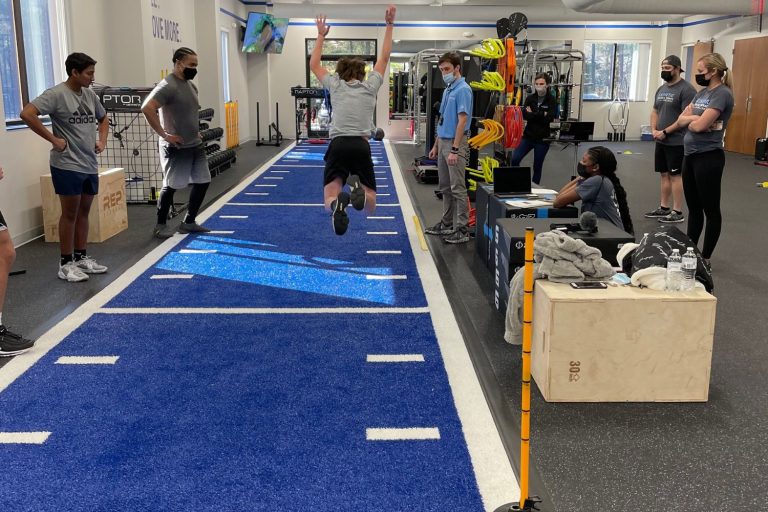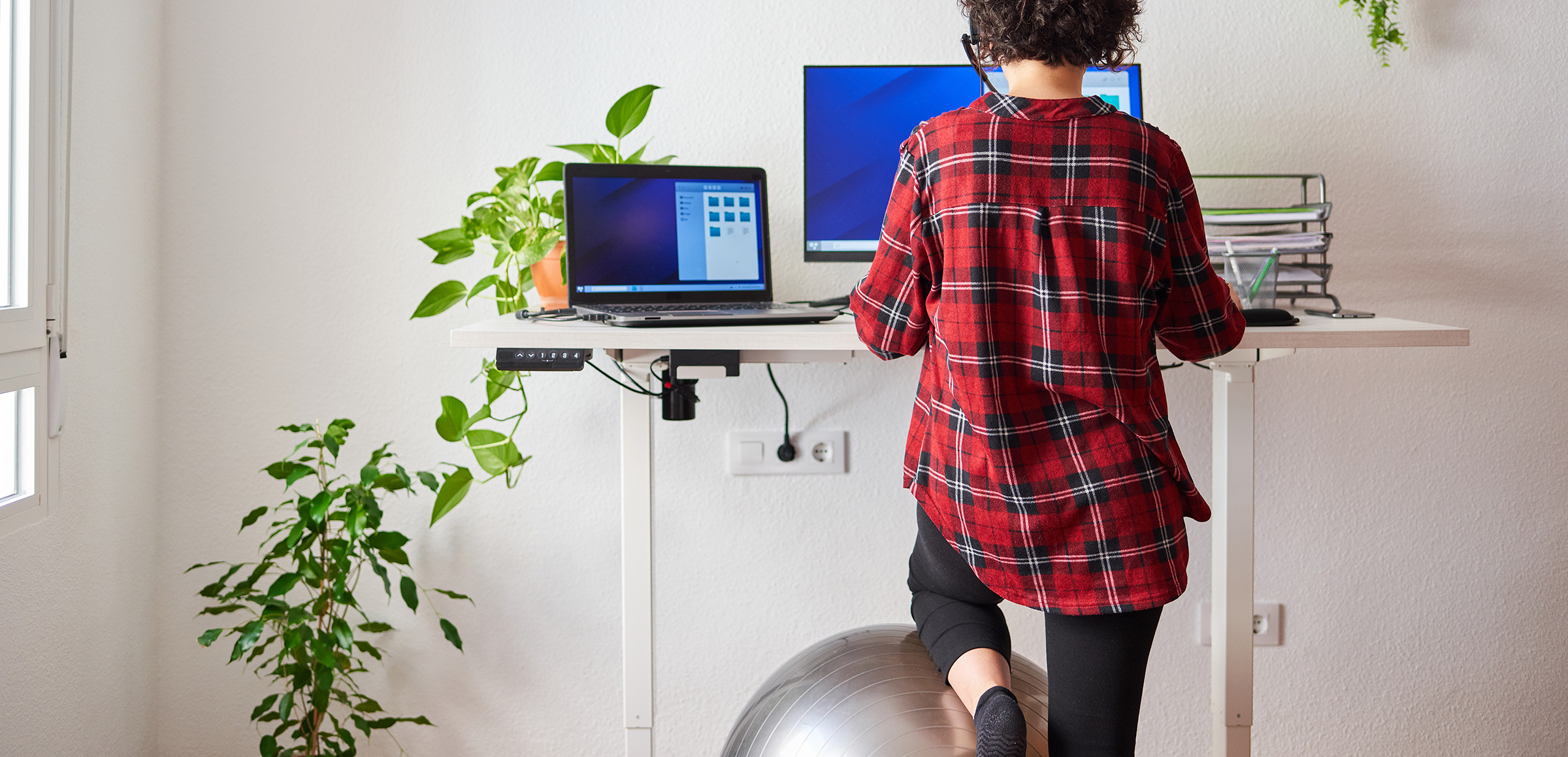

Ergonomics and Occupational Therapy
Creating Healthy Workspaces
As the modern workforce becomes increasingly desk-bound, the need for ergonomic workspaces is more critical than ever. Poorly designed work environments can lead to many health issues, from musculoskeletal disorders to chronic pain. This is where occupational therapy steps in, offering expertise in designing and optimizing workspaces to promote health and well-being.
Occupational therapy, often associated with rehabilitation and healthcare, plays a significant role in the realm of ergonomics. In this blog article, we’ll explore how ergonomics and occupational therapy collaborate to create healthy workspaces that support long-term well-being.
Understanding Ergonomics
Ergonomics is the study of designing equipment and devices that fit the human body and its movements. In a work context, it involves adapting the workspace to minimize discomfort, fatigue, and injury. Proper ergonomics focuses on ensuring that the work environment suits the needs and abilities of the people working in it.
Occupational therapy, with its focus on improving the quality of daily life, is well-positioned to address ergonomic concerns. Occupational therapists are trained to assess an individual’s functional abilities, analyze their work environment, and recommend adjustments that enhance comfort, productivity, and overall well-being.
Here are some key ways in which occupational therapy contributes to creating healthy work spaces through ergonomics:
1. Workspace Adjustments
Once occupational therapists have gathered all necessary information, they can recommend adjustments to the workspace. This might include modifying desk and chair heights, optimizing computer monitor placement, and ensuring proper keyboard and mouse positioning. These changes are aimed at reducing the risk of musculoskeletal disorders, such as carpal tunnel syndrome or lower back pain.
2. Equipment Recommendations
Occupational therapy also involves recommending ergonomic office equipment and accessories. Items like ergonomic chairs, keyboard trays, and monitor stands are crucial in creating a workspace that supports good posture and minimizes the risk of strain and injury. Occupational therapists can help individuals select the right equipment and ensure it is properly set up.
3. Promoting Healthy Work Habits
Beyond the physical adjustments, occupational therapy addresses work habits and routines. Occupational therapists can educate individuals on the importance of taking regular breaks, stretching, and maintaining good posture throughout the workday. These habits are key to preventing the development of chronic pain or discomfort.
4. Accommodating Disabilities
Occupational therapists are skilled at accommodating individuals with disabilities in the workplace. They can recommend adaptive tools and technologies that allow employees with special needs to perform their job tasks efficiently and comfortably. This inclusivity not only promotes diversity in the workforce but also ensures that all employees can work without limitations.
5. Injury Prevention
In addition to improving current workspaces, occupational therapy also focuses on preventing injuries. Occupational therapists provide training and education to employees on safe work practices and risk management. By promoting awareness and preventative measures, occupational therapy can significantly reduce the likelihood of work-related injuries.
Promoting Well-Being and Productivity
The benefits of ergonomic workspaces, guided by occupational therapy principles, extend far beyond preventing physical discomfort and injury. They also have a direct impact on an individual’s overall well-being and productivity.
When employees are comfortable and supported in their work environments, they experience reduced stress and increased job satisfaction. These factors contribute to higher levels of motivation and productivity, which, in turn, benefit both the individual and the organization.
In conclusion, the collaboration between ergonomics and occupational therapy is a powerful force in creating healthy workspaces. By recognizing the importance of designing work environments that are tailored to the needs of individuals, we can reduce the risk of workplace injuries, improve well-being, and enhance overall productivity. Occupational therapy’s expertise in assessing individuals, recommending workspace adjustments, and promoting healthy work habits is invaluable in achieving these goals. So, whether you’re working from home or in a corporate office, consider the profound impact that ergonomics, guided by occupational therapy, can have on your daily work experience. Your health and well-being are worth it.
Please Share
categories
Recent Posts

Ergonomics and Occupational Therapy
Creating Healthy Workspaces
As the modern workforce becomes increasingly desk-bound, the need for ergonomic workspaces is more critical than ever. Poorly designed work environments can lead to many health issues, from musculoskeletal disorders to chronic pain. This is where occupational therapy steps in, offering expertise in designing and optimizing workspaces to promote health and well-being.
Occupational therapy, often associated with rehabilitation and healthcare, plays a significant role in the realm of ergonomics. In this blog article, we’ll explore how ergonomics and occupational therapy collaborate to create healthy workspaces that support long-term well-being.
Understanding Ergonomics
Ergonomics is the study of designing equipment and devices that fit the human body and its movements. In a work context, it involves adapting the workspace to minimize discomfort, fatigue, and injury. Proper ergonomics focuses on ensuring that the work environment suits the needs and abilities of the people working in it.
Occupational therapy, with its focus on improving the quality of daily life, is well-positioned to address ergonomic concerns. Occupational therapists are trained to assess an individual’s functional abilities, analyze their work environment, and recommend adjustments that enhance comfort, productivity, and overall well-being.
Here are some key ways in which occupational therapy contributes to creating healthy work spaces through ergonomics:
1. Workspace Adjustments
Once occupational therapists have gathered all necessary information, they can recommend adjustments to the workspace. This might include modifying desk and chair heights, optimizing computer monitor placement, and ensuring proper keyboard and mouse positioning. These changes are aimed at reducing the risk of musculoskeletal disorders, such as carpal tunnel syndrome or lower back pain.
2. Equipment Recommendations
Occupational therapy also involves recommending ergonomic office equipment and accessories. Items like ergonomic chairs, keyboard trays, and monitor stands are crucial in creating a workspace that supports good posture and minimizes the risk of strain and injury. Occupational therapists can help individuals select the right equipment and ensure it is properly set up.
3. Promoting Healthy Work Habits
Beyond the physical adjustments, occupational therapy addresses work habits and routines. Occupational therapists can educate individuals on the importance of taking regular breaks, stretching, and maintaining good posture throughout the workday. These habits are key to preventing the development of chronic pain or discomfort.
4. Accommodating Disabilities
Occupational therapists are skilled at accommodating individuals with disabilities in the workplace. They can recommend adaptive tools and technologies that allow employees with special needs to perform their job tasks efficiently and comfortably. This inclusivity not only promotes diversity in the workforce but also ensures that all employees can work without limitations.
5. Injury Prevention
In addition to improving current workspaces, occupational therapy also focuses on preventing injuries. Occupational therapists provide training and education to employees on safe work practices and risk management. By promoting awareness and preventative measures, occupational therapy can significantly reduce the likelihood of work-related injuries.
Promoting Well-Being and Productivity
The benefits of ergonomic workspaces, guided by occupational therapy principles, extend far beyond preventing physical discomfort and injury. They also have a direct impact on an individual’s overall well-being and productivity.
When employees are comfortable and supported in their work environments, they experience reduced stress and increased job satisfaction. These factors contribute to higher levels of motivation and productivity, which, in turn, benefit both the individual and the organization.
In conclusion, the collaboration between ergonomics and occupational therapy is a powerful force in creating healthy workspaces. By recognizing the importance of designing work environments that are tailored to the needs of individuals, we can reduce the risk of workplace injuries, improve well-being, and enhance overall productivity. Occupational therapy’s expertise in assessing individuals, recommending workspace adjustments, and promoting healthy work habits is invaluable in achieving these goals. So, whether you’re working from home or in a corporate office, consider the profound impact that ergonomics, guided by occupational therapy, can have on your daily work experience. Your health and well-being are worth it.
Please Share







